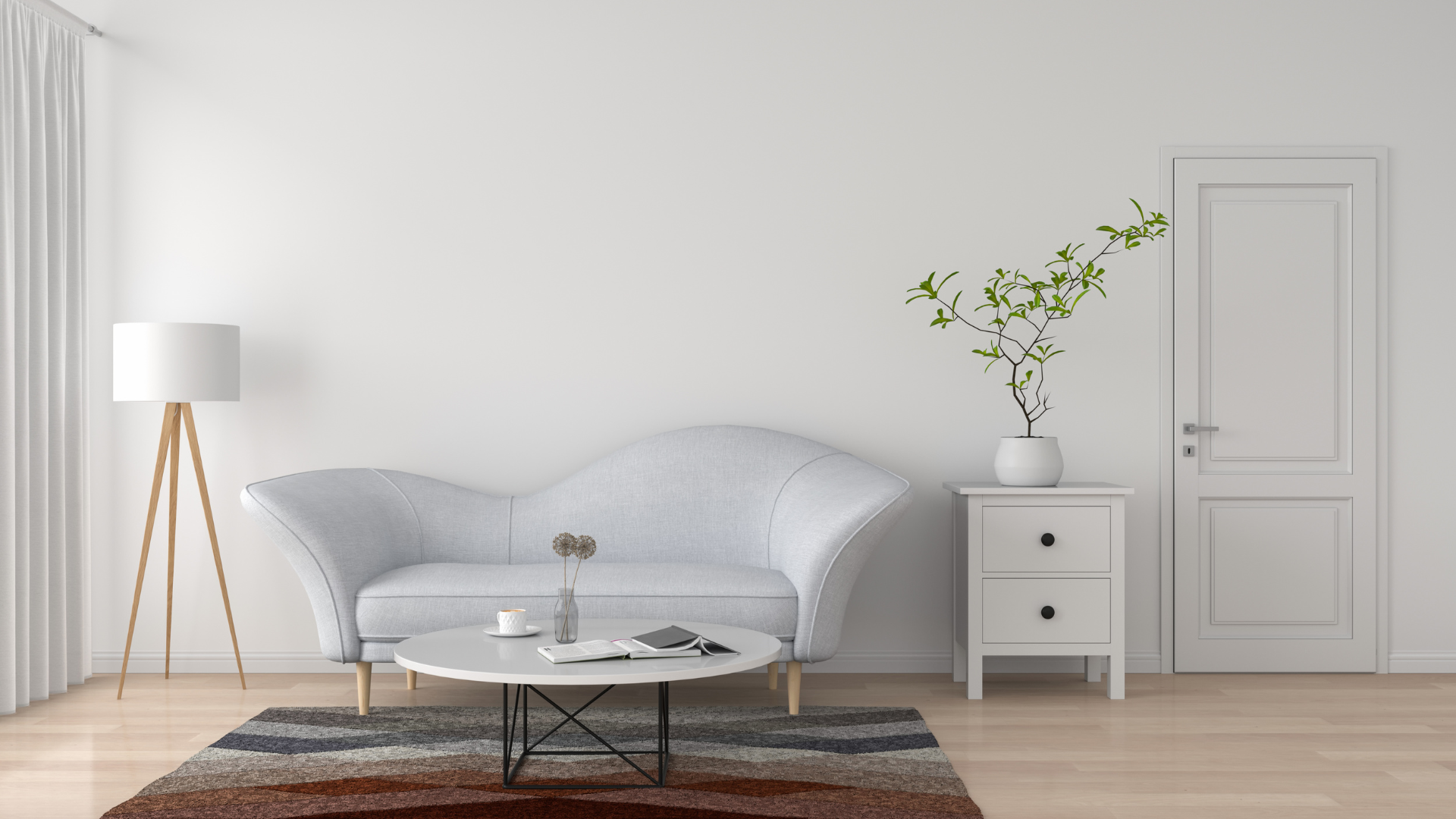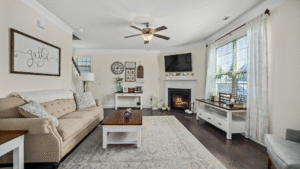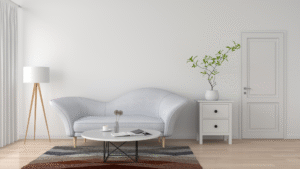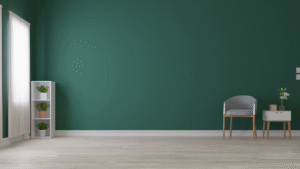Struggling to find minimalist living room ideas that don’t feel boring or cold?
You’re not alone. Many people think minimalism means plain white walls and empty shelves. But done right, it can be warm, stylish, and incredibly functional.
The real challenge is creating a room that feels lived-in without being cluttered. You want beauty and balance, not bare and bland.
This guide will help you turn that blank space into a peaceful retreat. Whether you have a small apartment or a spacious home, these creative ideas will simplify your space and elevate your style effortlessly.
Let’s explore twelve powerful ideas to bring minimalist magic to your living room.
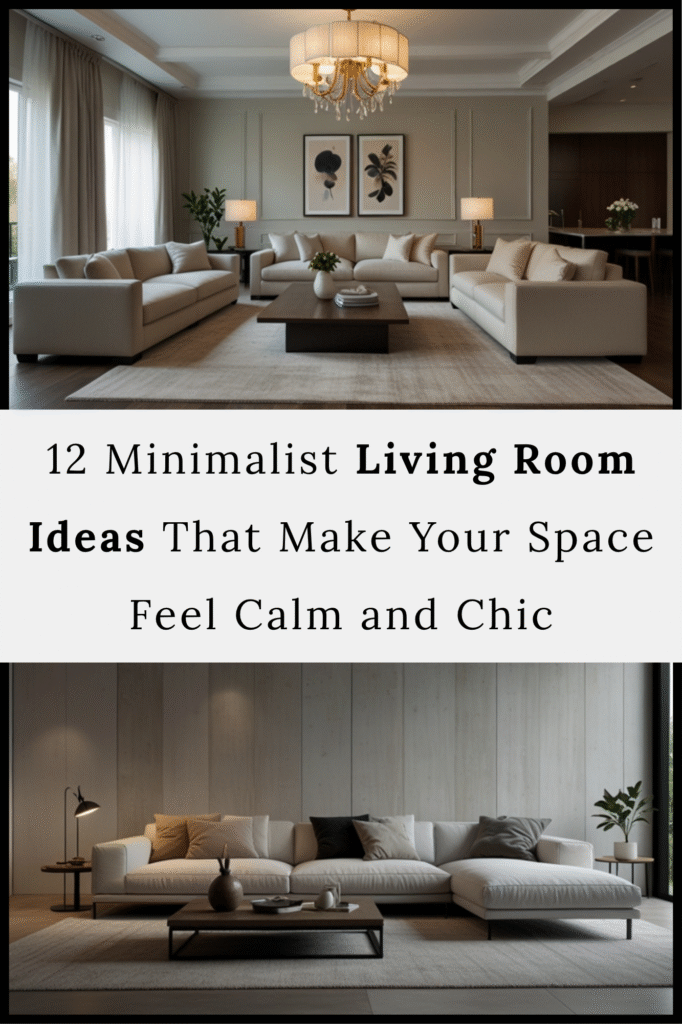
Neutral Color Palettes That Create Instant Calm
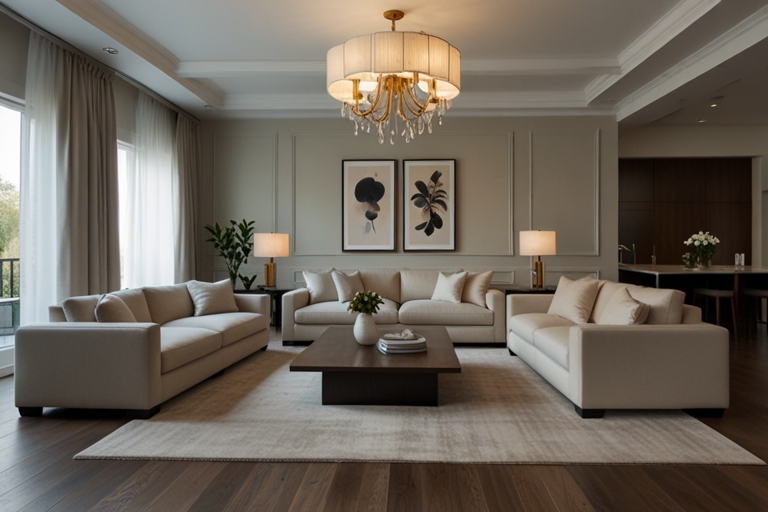
A minimalist living room starts with a neutral foundation. Choose soft tones like whites, taupes, and grays for a serene feel.
These shades open up small spaces and add light. Use them on walls, furniture, and even rugs for a cohesive look.
You can layer different tones within the same color family. This keeps things from looking flat or dull.
Add in natural elements like wood or stone to bring warmth to the room.
Low Profile Sofas That Feel Sleek and Cozy

Minimalist living rooms benefit from clean-lined furniture. A low-profile sofa with simple upholstery looks refined and intentional.
Choose colors like beige, cream, or charcoal to keep the look understated. Avoid bulky designs with too many cushions.
Consider modular sofas for flexibility and comfort. They give you more control over your space.
Add a few textured throws or pillows to soften the vibe without creating clutter.
Wall Art That Adds Personality Without Noise

You don’t have to skip art in a minimalist room. Choose a few large-scale pieces rather than many small ones.
Black-and-white photography, abstract prints, or neutral-toned canvases work beautifully.
Stick to simple frames—matte black, white, or wood finishes help maintain the clean look.
Spacing is key. Give your artwork room to breathe by not overfilling your walls.
Natural Materials That Elevate Simplicity

Minimalism doesn’t mean sterile. Materials like wood, rattan, jute, and linen add organic warmth.
Use a wooden coffee table or woven basket for storage and visual interest.
Opt for linen curtains or a jute area rug to add cozy texture. These accents soften sharp lines.
They ground the space while staying true to minimalist principles.
Functional Furniture That Doubles as Storage
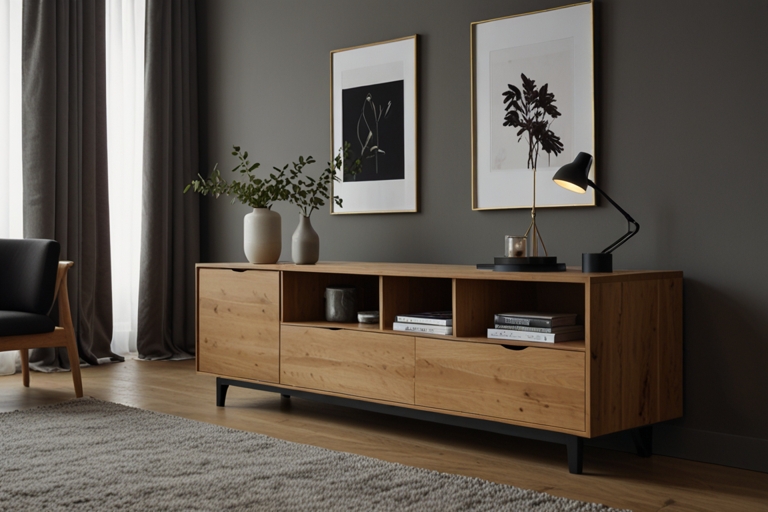
Less is more—especially with innovative furniture. Use ottomans with hidden storage or side tables with built-in drawers.
This helps reduce visible clutter while maximizing usability. Think sleek overstuffed.
Media consoles with closed doors keep devices out of sight. Minimalism works best when everything has a home.
Smart storage supports clean visuals and practical living.
Greenery That Breathes Life into Clean Lines
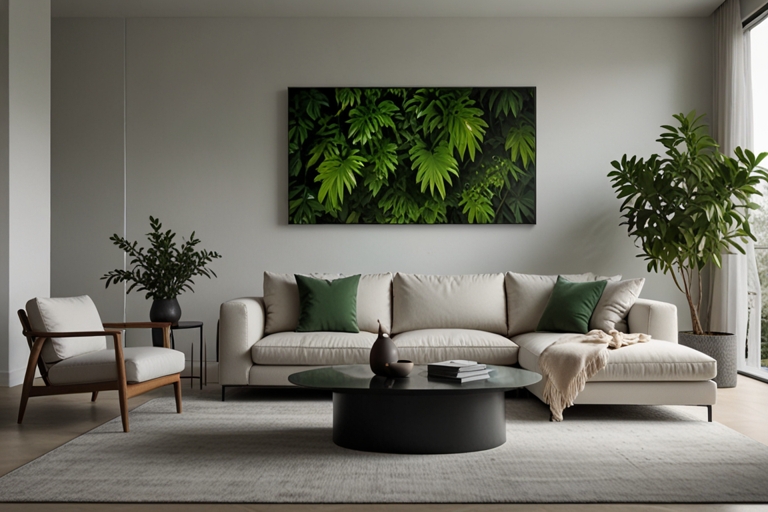
Plants are a minimalist must-have. A tall fiddle leaf fig or a small snake plant adds life without fuss.
Stick to one or two plants per area to avoid overcrowding. Let them shine as sculptural accents.
Choose simple planters in matte black, ceramic white, or terracotta.
Plants bring a natural balance and calm energy to minimalist designs.
Lighting Fixtures That Make a Modern Statement
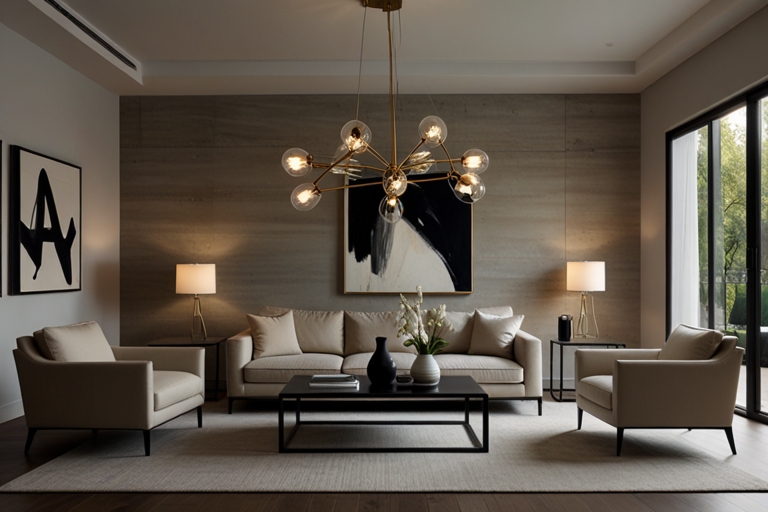
Lighting can be a focal point in your minimalist room. Choose sleek pendants or modern floor lamps with clean silhouettes.
Metal finishes like black, brass, or chrome work well in minimalist settings.
A well-placed lamp near a reading chair adds function without clutter.
Good lighting keeps the space feeling open and welcoming.
Simple Curtains That Frame Without Overpowering
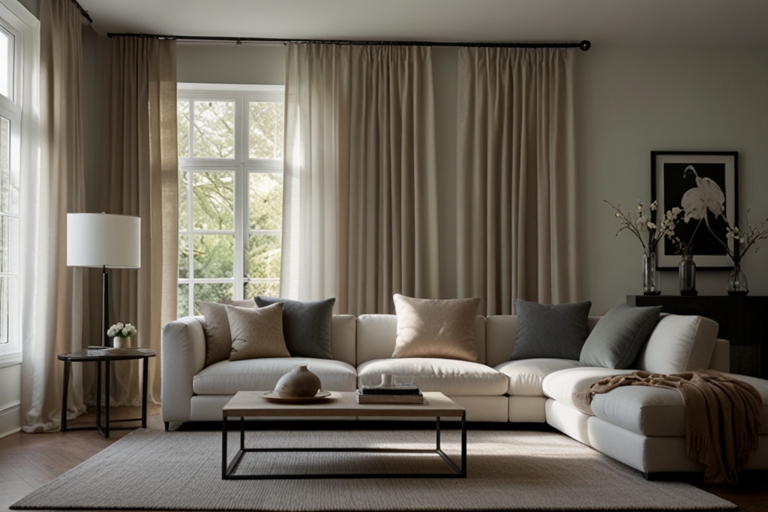
Choose floor-length curtains in solid colors or light textures. White, beige, or oatmeal shades are great minimalist choices.
Stick with airy fabrics like linen or cotton. They let light through and don’t feel heavy.
Avoid prints or busy patterns—simplicity is key.
Curtains should frame your windows without drawing too much attention.
Floating Shelves That Display Intentionally Chosen Decor
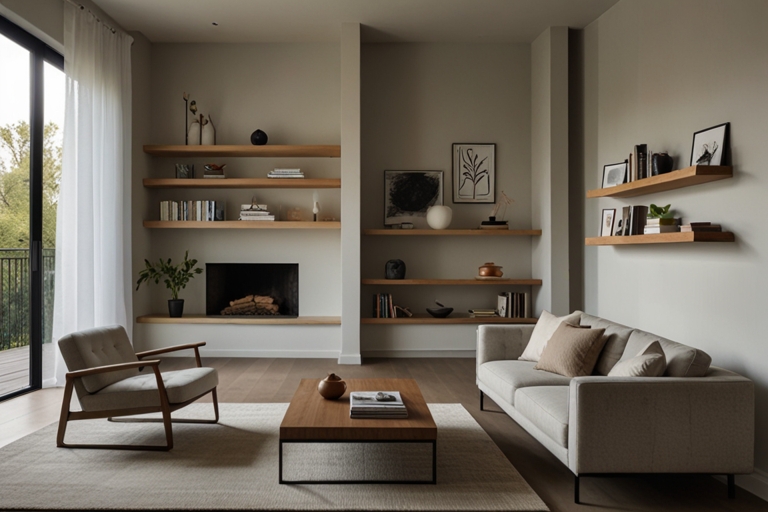
Floating shelves give the illusion of space. They look clean and modern while adding storage or style.
Use them to display 3–5 carefully selected items like books, ceramics, or framed art.
Stick to one color palette and leave space between pieces.
This gives your shelves a curated, intentional appearance.
Mirrors That Expand and Brighten Small Spaces
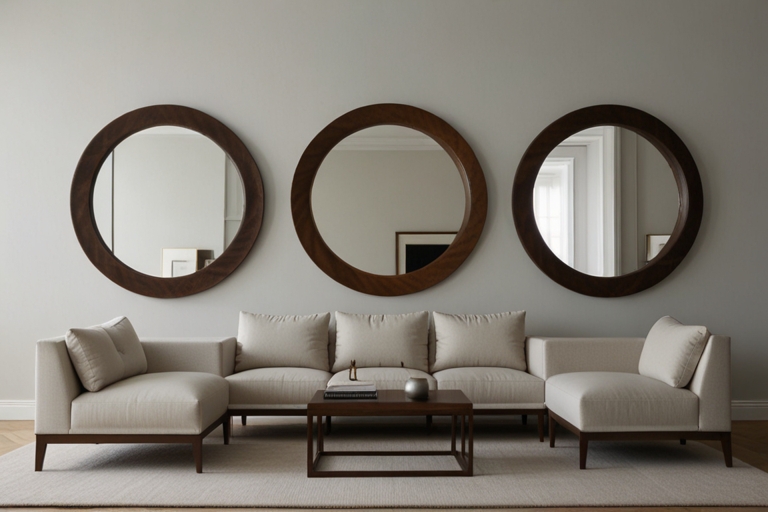
A well-placed mirror can make your minimalist living room feel twice as large.
Opt for large, frameless mirrors or ones with simple designs.
Hang them across from windows to reflect natural light and open up the space.
Mirrors are both decorative and functional in minimalist design.
Geometric Rugs That Add Subtle Visual Interest
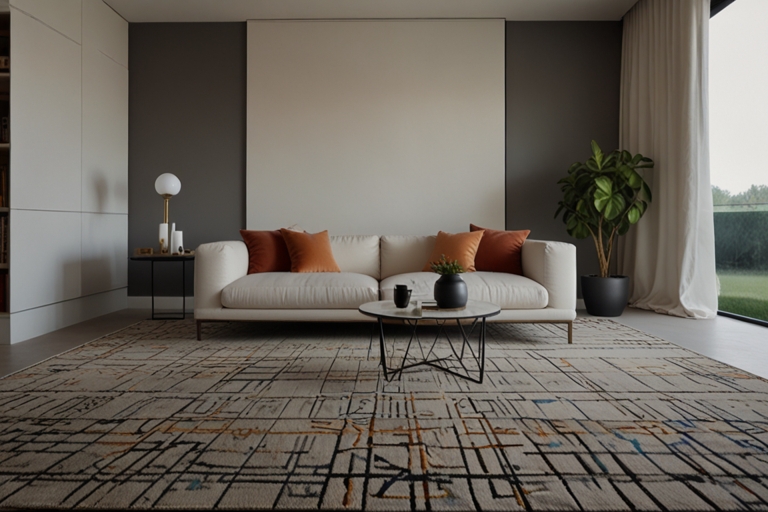
Skip the heavy patterns. Choose rugs with soft lines, geometric shapes, or subtle textures.
Monochrome tones or dual-tone rugs work best. Look for low-pile options in cotton or wool.
Rugs help define your space without dominating it.
They bring warmth while staying true to a minimalist style.
Accent Pieces That Serve a Clear Purpose
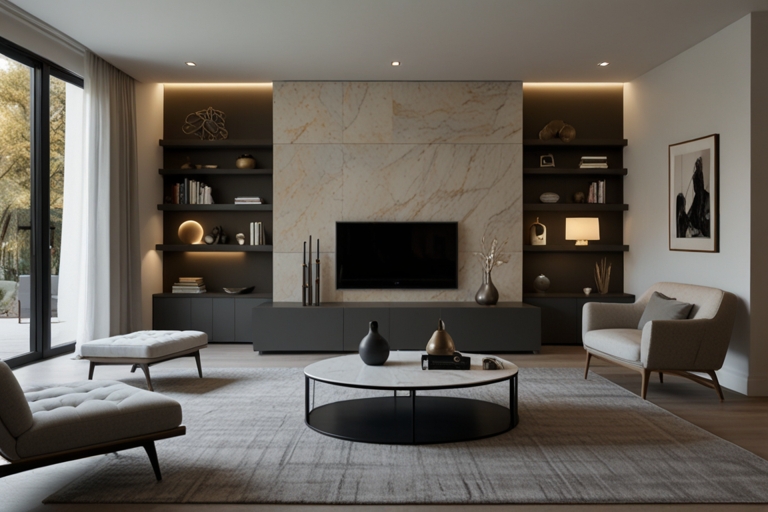
Every item in a minimalist room should have a purpose. Choose accessories that also serve a function.
Think trays, coasters, or sculptural bowls holding remotes or keys.
Limit your decor to just a few intentional pieces.
This keeps the room clean and meaningful—not crowded.
FAQs
Q1. Can minimalist living rooms be cozy and not feel cold?
Yes! Add warmth through soft lighting, textured fabrics, wood accents, and a few plants to keep it inviting.
Q2. What are the best colors for a minimalist living room?
Stick to neutral colors like white, beige, gray, and soft pastels. These make the space feel calm and airy.
Q3. How do I stop my minimalist space from looking empty?
Use texture and shape instead of clutter. Choose meaningful, beautiful items and layer them with textiles or art.
Q4. What furniture works best in minimalist living rooms?
Opt for simple, clean-lined furniture. Look for dual-purpose items that offer style and storage in one piece.

